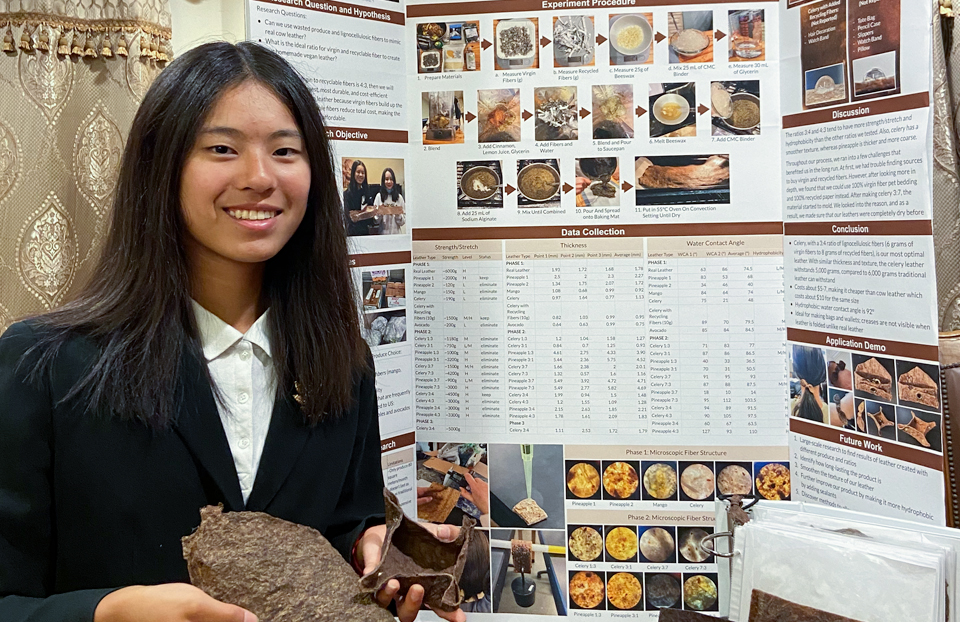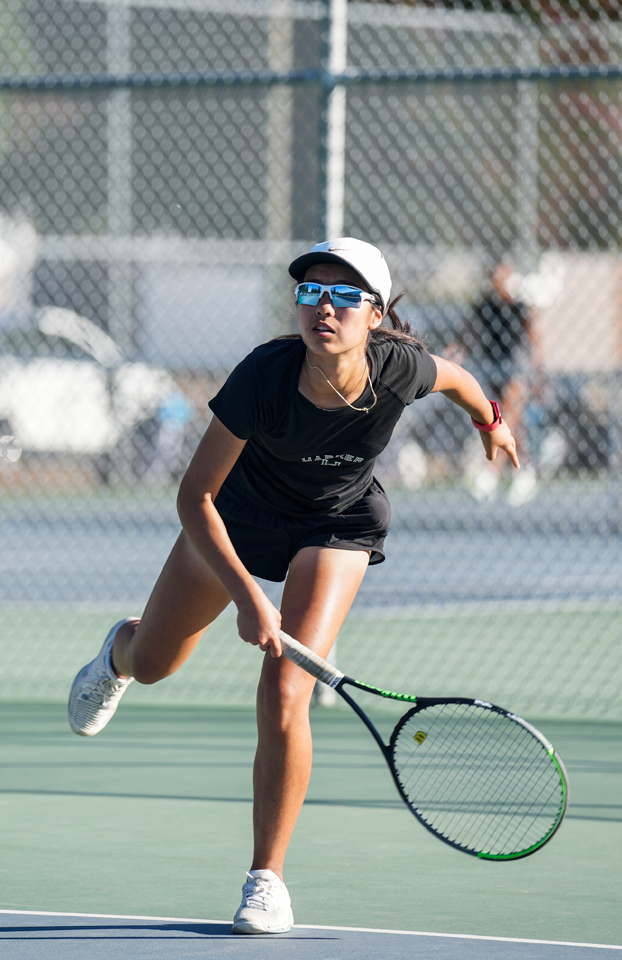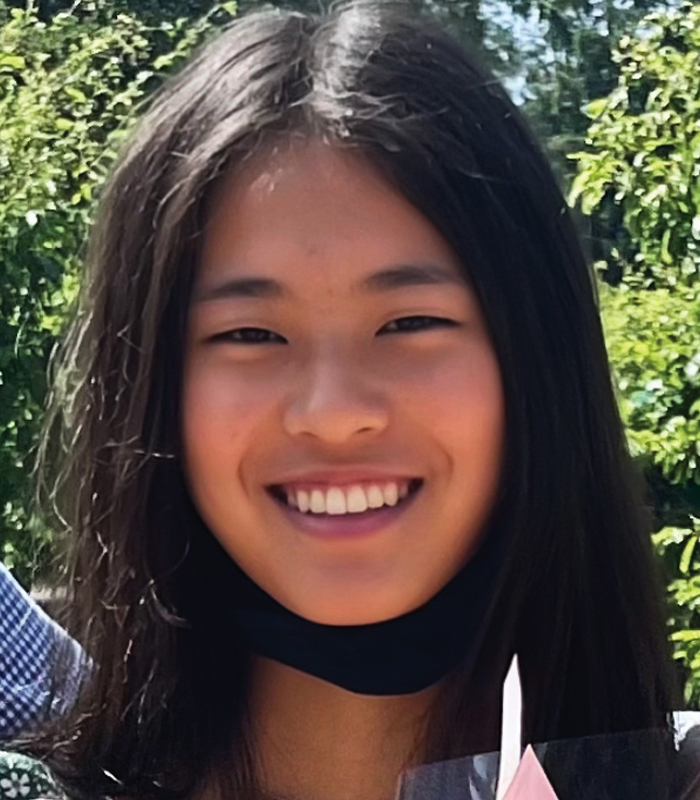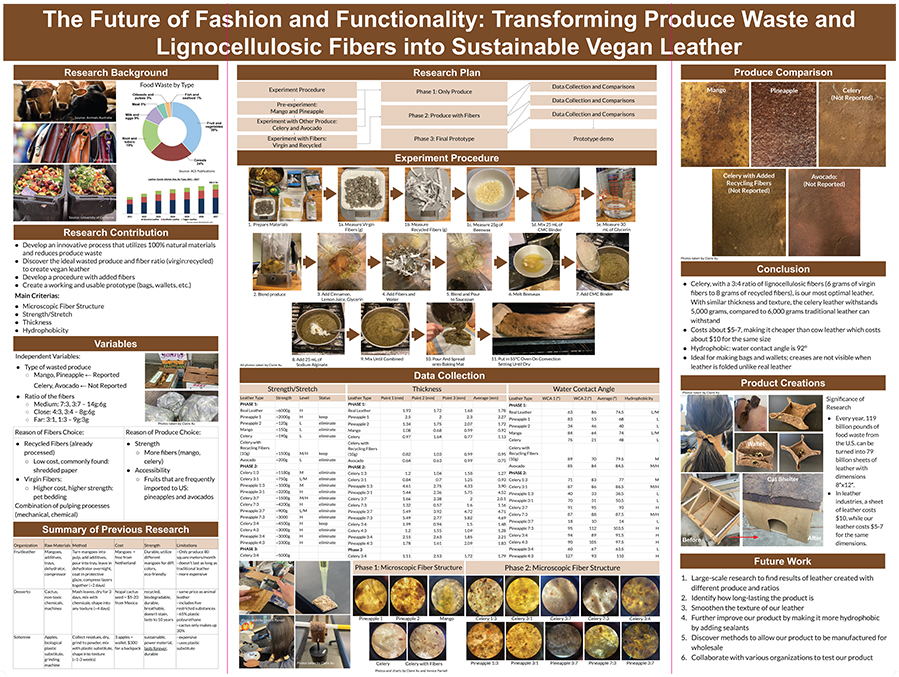Claire Xu
8th Grade, The Harker School
San Jose, CA
Claire and her teammate Venice Parnell tested different produce fibers (pineapple, mango, avocado and celery) combined with recycled paper to create a leather alternative.
The Future of Fashion and Functionality: Transforming Produce Waste and Lignocellulosic Fibers Into Sustainable Vegan Leather
VIEW POSTERProject Background
Claire learned in science class that people in the United States discard 119 billion pounds, nearly 54 million metric tons, of food every year. This waste generates greenhouse gases, contributing to climate change. Another process that damages the environment is leather production. Although synthetic and plant-based leathers are less harmful, Claire found that their production uses fossil fuels and plastics. And some leather alternatives do not biodegrade easily. So, she and her teammate Venice Parnell decided to see if they could use food scraps to create vegan leather. The fashion industry and the planet will benefit from this environmentally friendly leather alternative, Claire says.
Tactics and Results
Claire and Venice explored leather made with four different high-fiber produce items: pineapple, mango, celery and avocado. They combined the fresh produce fibers with other materials including beeswax, glycerin and various amounts of recycled paper. The paper added processed fibers. After mixing the materials together, the students baked each leather sheet in an oven until dry. When finished, Claire and Venice measured the leathers’ thickness and tested how much weight it could hold. They also tested each material’s ability to repel water by examining a water droplet’s shape when placed on the leather. Based on these measurements, the duo found that vegan leather made with celery performed the best overall. It looked the nicest as well. “The celery leathers have a smoother texture, which enhances the overall appearance,” Claire says. The pair also found that the best ratio of fibers was three parts produce fibers to four parts recycled fibers. “It enhances durability but still maintains flexibility,” Claire notes. The celery leather made with this fiber ratio repelled water better than real leather and was almost as strong. Using this vegan leather prototype, Claire and Venice crafted jewelry, wallets and even the roof of a cat house.

Beyond the Project
So far, Claire and Venice’s leather has lasted several months. “In the future,” Claire says, “I would like to identify how long-lasting the leather is.” She also wants to test leathers made from more produce varieties and different fiber ratios.
Other interests
Claire enjoys tennis, reading research papers and lab dissections. “Precision is required in dissections, and I also learn about the complexity of different organisms through interactive and hands-on learning,” she notes. Claire would like to become a biomedical engineer. “I am captivated by the potential of technology advancements to save the lives of many people,” she says.


